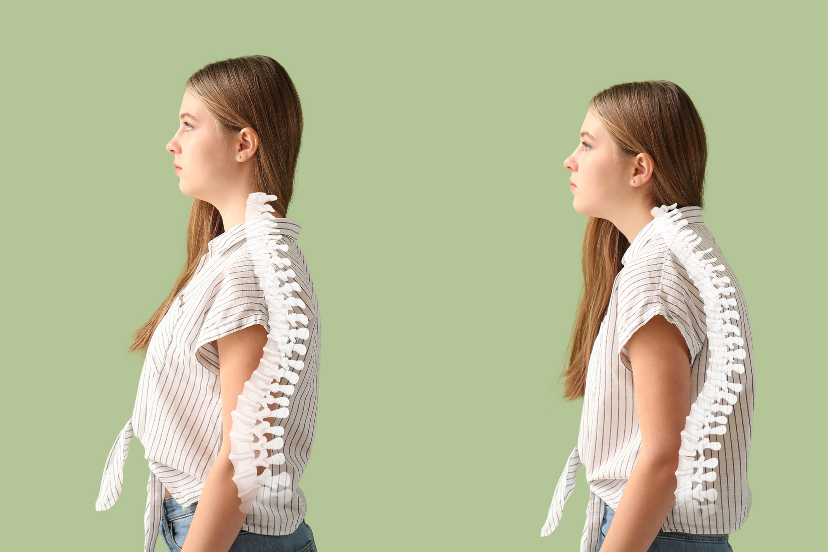The Truth about Dowager’s Hump Osteoporosis
Introduction
Welcome, dear readers, to a journey through the intricacies of a condition that often goes unnoticed until it significantly impacts one’s life – Dowager’s Hump Osteoporosis. In this comprehensive guide, we’ll delve into the causes, symptoms, prevention strategies, and treatment options for this common yet overlooked health concern.
What is it?
Let’s start at the core of our discussion – understanding Dowager’s Hump Osteoporosis. Picture this: a gradual curvature of the upper back, resembling a hump, primarily affecting older women but not exclusive to them. What’s the connection to osteoporosis? Well, it’s the bone density loss that weakens the spine, leading to this distinctive hump formation.
The Silent Culprit: Osteoporosis and Its Role
Osteoporosis, often dubbed the “silent disease,” stealthily diminishes bone density over time. As bones lose density, they become more susceptible to fractures and deformities. The spine, a vulnerable target, succumbs to this degeneration, resulting in the infamous Dowager’s Hump.
Unraveling the Causes
Understanding the root causes is pivotal in tackling any health issue. In the case of Dowager’s Hump Osteoporosis, factors like aging, hormonal changes, and nutritional deficiencies play a significant role. Let’s dissect these contributing elements and explore how they intertwine.
Hormonal Havoc: A Culprit Unveiled
Hormonal imbalances, especially in postmenopausal women, trigger accelerated bone loss. The reduction in estrogen levels, a bone-preserving hormone, creates a conducive environment for osteoporosis to take root.
Ageing Gracefully but Beware
As the years pass, our bones undergo natural wear and tear. Aging leads to a decline in bone mass and density, making them more susceptible to fractures and deformities.
The Nutritional Nexus
A deficiency in crucial nutrients like calcium and vitamin D can pave the way for Dowager’s Hump Osteoporosis. These nutrients act as the building blocks for robust bone health.
Spotting the Hump: Symptoms and Identification
Recognizing Dowager’s Hump Osteoporosis in its early stages empowers individuals to take proactive measures. Here’s what you should look out for:
- Gradual Changes in Posture
- Pay attention to any noticeable changes in the curvature of your upper back.
- Back Pain and Discomfort
- Persistent back pain, coupled with discomfort, could be indicative of spine-related issues.
- Reduced Height
- A gradual loss in height may signal vertebral compression fractures, a common consequence of osteoporosis.
- Limited Spinal Mobility
- Difficulty in bending or twisting could be an early sign of spine-related issues.
FAQs: Breaking the Silence
1. What age group is most susceptible to Dowager’s Hump Osteoporosis?
As individuals age, especially postmenopausal women, the risk of developing Dowager’s Hump Osteoporosis increases. However, it can affect people of various age groups.
2. Can men develop Dowager’s Hump Osteoporosis?
Absolutely. While more common in women, men are not exempt from this condition. Aging, hormonal imbalances, and inadequate nutrition can affect both genders.
3. Are there preventative measures for Dowager’s Hump Osteoporosis?
Yes, adopting a bone-healthy lifestyle is crucial. Regular exercise, a balanced diet rich in calcium and vitamin D, and avoiding smoking and excessive alcohol intake contribute to prevention.
4. Is Dowager’s Hump Osteoporosis treatable?
Early detection is key. Treatment may involve medication, physical therapy, and lifestyle modifications. However, severe cases may require more intensive interventions.
5. Can Dowager’s Hump Osteoporosis be reversed?
While it may not be completely reversible, prompt intervention and lifestyle changes can prevent further progression and improve overall bone health.
6. How often should one undergo bone density testing?
The frequency of bone density testing varies based on individual risk factors. Consult with your healthcare provider to determine the most suitable testing schedule.
Navigating Treatment Options
Now that we’ve unraveled the layers of Dowager’s Hump Osteoporosis, let’s explore the available treatment options. Remember, early intervention is key to managing this condition effectively.
Medication Marvels
In certain cases, medications such as bisphosphonates and hormone replacement therapy may be prescribed to strengthen bones and slow down bone loss.
Physical Therapy: Building Strength
Engaging in targeted exercises under the guidance of a physical therapist can help improve posture, strengthen muscles, and enhance overall bone health.
Nutritional Foundations
A diet rich in calcium and vitamin D is paramount. Incorporating dairy products, leafy greens, and fortified foods can aid in maintaining optimal bone density.
Lifestyle Modifications
Quit smoking and limit alcohol intake. Both these habits contribute to bone density loss, exacerbating the risks associated with Dowager’s Hump Osteoporosis.
Conclusion
As we conclude our journey through the realms of Dowager’s Hump Osteoporosis, remember that knowledge is your most potent weapon. By understanding the causes, recognizing symptoms, and adopting preventative measures, you empower yourself to navigate the challenges posed by this condition.
Whether you’re in your golden years or just embarking on adulthood, prioritizing bone health lays the foundation for a resilient and vibrant future. Let’s stand tall, embrace preventive measures, and say goodbye to the silent hump that often catches us off guard. Your spine deserves the best – let’s give it the care it needs.




